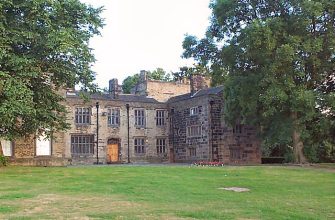On the rugged Scottish coastline, amidst the wild beauty of the Hebrides, lies a natural wonder that has captivated the imaginations of visitors for centuries. Fingal’s Cave, on the uninhabited island of Staffa, is a geological marvel, a sea cave formed entirely from hexagonal basalt columns. This unique formation, combined with the cave’s remarkable acoustics, has made it a popular tourist attraction and a source of inspiration for artists and musicians throughout history.
History and Legend of Fingal’s Cave
The cave is named after the hero of an epic poem by 18th-century Scots poet-historian James Macpherson. Fingal is a legendary Celtic warrior, and the cave is said to be part of his kingdom. The geological formation of the cave, however, dates back millions of years to the Paleogene period. The hexagonal basalt columns were formed by the slow cooling of lava flows, creating a striking pattern that is echoed in other parts of the world, most notably the Giant’s Causeway in Northern Ireland. The connection between these two sites has given rise to legends of giants building a causeway across the sea.
What to See and Expect
Fingal’s Cave is a sea cave, meaning it is directly connected to the sea. The cave’s interior is accessible by boat during calm weather, allowing visitors to marvel at the towering basalt columns and the cave’s cathedral-like structure. The cave’s acoustics are another remarkable feature, with the echoes of the waves creating a haunting, melodic sound that has inspired numerous musical compositions.
Staffa Island itself is a haven for wildlife. Visitors can often spot seals basking on the rocks, while the cliffs are home to a variety of seabirds, including puffins, guillemots, and razorbills.
Tours and Admission
Several tour operators offer boat trips to Fingal’s Cave from the nearby islands of Mull and Iona, as well as from the mainland. These tours typically include a landing on Staffa Island and time to explore the cave. Some tours also offer wildlife spotting opportunities and visits to other islands in the Hebrides.
There is no admission fee to visit Fingal’s Cave or Staffa Island. However, the cost of boat tours varies depending on the operator and the length of the tour.
Tips for Tourists
- Weather in the Hebrides can be unpredictable, so dress in layers and be prepared for sudden changes.
- Wear sturdy footwear. The terrain on Staffa Island is rough and can be slippery, especially in wet weather.
- Respect the wildlife. Keep a safe distance from animals and birds, and do not disturb nesting sites.
- There are no facilities on Staffa Island, so bring any food, water, or other essentials with you.
Practical Information
Boat tours to Fingal’s Cave typically operate from April to September, depending on weather conditions. The journey from Mull to Staffa takes around an hour. There are no overnight accommodations on Staffa Island, so plan your visit as a day trip.
Fingal’s Cave, with its unique geological formation and its place in legend and history, is a must-see destination on any visit to the Scottish coastline. This natural wonder offers an unforgettable experience of Scotland’s wild beauty and the awe-inspiring power of nature.








